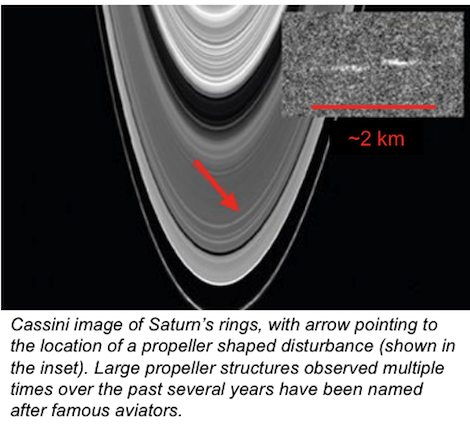Marc Abrahams's Blog, page 554
August 16, 2012
The Imminent Death of Celebrating the Deaths of Non-Celebrities
Dead celebrities fared better and better against other dead persons as the twentieth century progressed, suggests this study of who was celebrated and who was not:
“Dead Men Do Tell Tales: The Apotheosis of Celebrities in 20th Century America,” Timothy J. Bertoni [pictured here] and Patrick D. Nolan, Sociation Today, vol. 10, no. 1, Spring/Summer 2012. The authors, at University of South Carolina, explain:
“We will test our hypothesis with data obtained from the New York Times — “The Newspaper of Record.’ … Celebrity obits increase in all years, reaching 28 percent in 2000, the largest percentage for any category in all times examined…. The increasing prominence of celebrity obits clearly outpaces changes in employment… After increasing modestly from 1900 to 1950, religious obituaries plummet to zero in 2000, the only occupational category, in any year, to have zero obits…. Manufacturing obituaries peak in 1950, but by the end the century are only a third of the level they were and its beginning. Business and finance obituaries basically hold steady (or increased slightly) from 1900 through 1975, but then drop substantially in 2000.”
(Thanks to Hugh Henry for bringing this to our attention.)
BONUS: Megan Gannon of Livescience gives her take on the study.

August 15, 2012
Seat vibration test: oscillate the human
This video documents (or as layperson say, “shows”) some seat-vibration testing at Wright-Patterson Air Force Base in Dayton, Ohio, at some point in the 1960s.
(Thanks to Wes O’Neill for bringing it to our attention.)

Knowing New Knowledge (Transilvanian study)
There’s always more to know about knowledge. This study makes that, if nothing else, clear:
“Measuring the Value of Different Categories of Knowledge within a Romanian University,” Dana Adriana Lupşa-Tătaru, paper presented at the International Conference on Applied Statistics, September 23–26, 2007, at Ribno (Bled), Slovenia. The author, at Transilvania University of Braşov, Braşov, Romania, explains:
“The study revealed that the results of theoretical knowledge value model application and the perceived value of knowledge coincide, highlighting the major role of one specific category of knowledge, namely knowledge about / generated through the application of quality management.”

Shake, animal, shake—and dry, at your own frequency
A furred animal shakes itself dry at a characteristic frequency. This video documents the physics of it, in slow motion accompanied by music. This study, from which the video is descended, explains the detail:
“Wet Animals Shake at Tuned Frequencies to Dry,” Andrew K. Dickerson, Zachary G. Mills, and David L. Hu, Journal of the Royal Society Interface, forthcoming.
(Thanks to investigator Elaine Snell for bringing this to our attention.)
BONUS: Earlier this year, Dickerson and Hu teamed up with Peter Shankles and Ig Nobel Prize winner Mahadevan to publish the report called “Mosquitoes survive raindrop collisions by virtue of their low mass“, which also spun off a video:

August 14, 2012
Where’s the ice?
 Mindat.org is an online mineral and locality database. The site provides global location data for quite literally hundreds of minerals – e.g. Herbertsmithite. Scroll down for the map, which shows that Herbertsmithite may be found in : Chile, Greece, Iran, and the USA.
Mindat.org is an online mineral and locality database. The site provides global location data for quite literally hundreds of minerals – e.g. Herbertsmithite. Scroll down for the map, which shows that Herbertsmithite may be found in : Chile, Greece, Iran, and the USA.
But the site is by no means restricted to exotic minerals - it also lists, for example, Ice. Its location-map shows that ice can be found in : Austria, Belgium, Canada, Germany, Mars, Norway, Outer Space, Russia, Slovakia, Spain, Tanzania, The Moon, and the USA. But, before prospecting, prospective ice hunters should perhaps take note of an important detail about one third of the way down the page – the Health Warning

PR Headline ‘o the Week: Singing & Simulate Driving
This week’s Press Release Headline of the Week appears in a press release from the publisher of a journal. The headline is: “A simulator study of the effects of singing on driving experience“. The study to which it refers is:
“A Simulator Study of the Effects of Singing on Driving Performance,” Genevieve M. Hughes, Christina M. Rudin-Brown [pictured here] and Kristie L. Young, Accident Analysis and Prevention, epub July 30, 2012. The authors, at Monash University, Australia, report:
“Twenty-one participants completed three trials of a simulated drive concurrently while performing a peripheral detection task (PDT); each trial was conducted either without music, with participants listening to music, or with participants singing along to music…. Collectively, results suggest that singing while driving alters driving performance and impairs hazard perception while at the same time increasing subjective mental workload. However, singing while driving does not appear to affect driving performance more than simply listening to music. Further, drivers’ efforts to compensate for the increased mental workload associated with singing and listening to music by slowing down appear to be insufficient, as evidenced by relative increases in PDT response times in these two conditions compared to baseline.”

August 13, 2012
What One Learns By Studying Studies about Drinking
To answer the question, What happens when people drink alcohol? one can read through thousands of research studies published in respected scholarly journals. One must look a bit harder to answer a different question: What, exactly, did some of those researchers hope to learn by doing that research?
Let’s take a quick hop through the literature in one publication – the Journal of Studies on Alcohol and Drugs, which boasts of being “the oldest alcohol/addiction research journal currently published in the United States”. It started life in 1940 as the Quarterly Journal of Studies on Alcohol, then adjusted and re-adjusted its name as research funders changed their focus or preferred vocabulary.
A study called Observational Study of Alcohol Consumption in Natural Settings; the Vancouver Beer Parlour appeared in a 1975 issue. Authors Ronald Cutler and Thomas Storm, at the University of British Columbia, say they visited “approximately 25″ Vancouver beer parlours, wherein they observed the patrons. They distill what they learned into three thoughts…
So begins this week’s Improbable Research column in The Guardian.

Stochastic flights of propellers (near Saturnian moonlets)
Stochastic flights of propellers, seldom discussed until now, are openly discussed in this new study:
“Stochastic flights of propellers,” Margaret Pan [pictured here] (UC Berkeley), Hanno Rein (IAS), Eugene Chiang (UC Berkeley), Steven N. Evans (UC Berkeley), arXiv:1206.3583v1, June 15, 2012. The authors report:
“Kilometer-sized moonlets in Saturn’s A ring create S-shaped wakes called ‘propellers’ in surrounding material. The Cassini spacecraft has tracked the motions of propellers for several years and finds that they deviate from Keplerian orbits having constant semimajor axes. The inferred orbital migration is known to switch sign. We show using a statistical test that the time series of orbital longitudes of the propeller Bl\’eriot is consistent with that of a time-integrated Gaussian random walk. That is, Bl\’eriot’s observed migration pattern is consistent with being stochastic. We further show, using a combination of analytic estimates and collisional N-body simulations, that stochastic migration of the right magnitude to explain the Cassini observations can be driven by encounters with ring particles 10-20 m in radius. That the local ring mass is concentrated in decameter-sized particles is supported on independent grounds by occultation analyses.”
An American Astronomical Society paper called “Propeller Moonlets in Saturn’s Rings” includes this photo of propellers, with accompanying explanation:
BONUS (mostly unrelated): Hanno Rein’s “LaTeX Coffee Stains“. (HT David Bradley)

Plants with charisma: A first analysis
Some plants have more charisma than others, in the sense that they seem to draw stronger reactions from people than do certain other plants. So suggests a recent study. Emily Anthes, writing in the Wonderland blog, reacts to it:
I came across the work of Emily Hounslow [pictured here], currently a PhD student at the UK’s University of Sheffield. For her master’s degree in biology, Hounslow explored the notion of charismatic plants. It’s an interesting notion–and one that hasn’t been explored much. After all, plants in general are much less charismatic than animals, less likely to earn our affection or conservation attention…. In the paper, Hounslow explores the characteristics that might make certain plants especially appealing and attractive to humans. (The paper appears to be unpublished, but you can download a copy of it here.)

August 12, 2012
Typo typos and “Media@USU
As playwright Sir Tom Stoppard once put it : “Words are sacred. They deserve respect. If you get the right ones in the right order, you can nudge the world a little.” The quote features on the faculty profile page [* see note below] of Edward C. Pease, Ph.D. Professor and Graduate Program Coordinator at the Department of Journalism & Communication of Utah State University (USU).
For an example of his publications, see a book review for Journalism & Mass Communication Quarterly, Volume 88, Issue 2, which is featured on the university’s Journalism Faculty Publications page : ‘The Great Typo Hunt: Changing the World One Correction at a Time‘
“This is the most important available analysis of the crisis of journalism, exhibiting critical skills of which alarmingly few North American analysts are capable. NBria Almiron is lecturer and researcher in communication at Universitat Pompeu Fabra, Barcelona.”
But who is NBria Almiron? The Universitat Pompeu Fabra search page can’t find the author – and the only reference Improbable can dig up leads back to the very same article . . .
* Notes:
• The professor’s profile page features the following typos : Specialty, Researc, Guitare, and Od, and also hosts a sprinkling of colourful ASCII characters : américaineâ€, métro, ‘distinguished, “Media, “missionary, Café, “The, “la, etc etc.
• Photo courtesy the professor’s blog Ask Dr. Ted!
• Dra. Núria Almiron, also a lecturer at the Universitat Pompeu Fabra, can be found here :
• Read the full review (without typos) here :
• Wherein the professor points out : ”No typo exists in a vacuum. Behind every misplaced comma or junction error is a story- whether it be about education, carelessness, or socioeconomic and privilege.”

Marc Abrahams's Blog
- Marc Abrahams's profile
- 14 followers

























